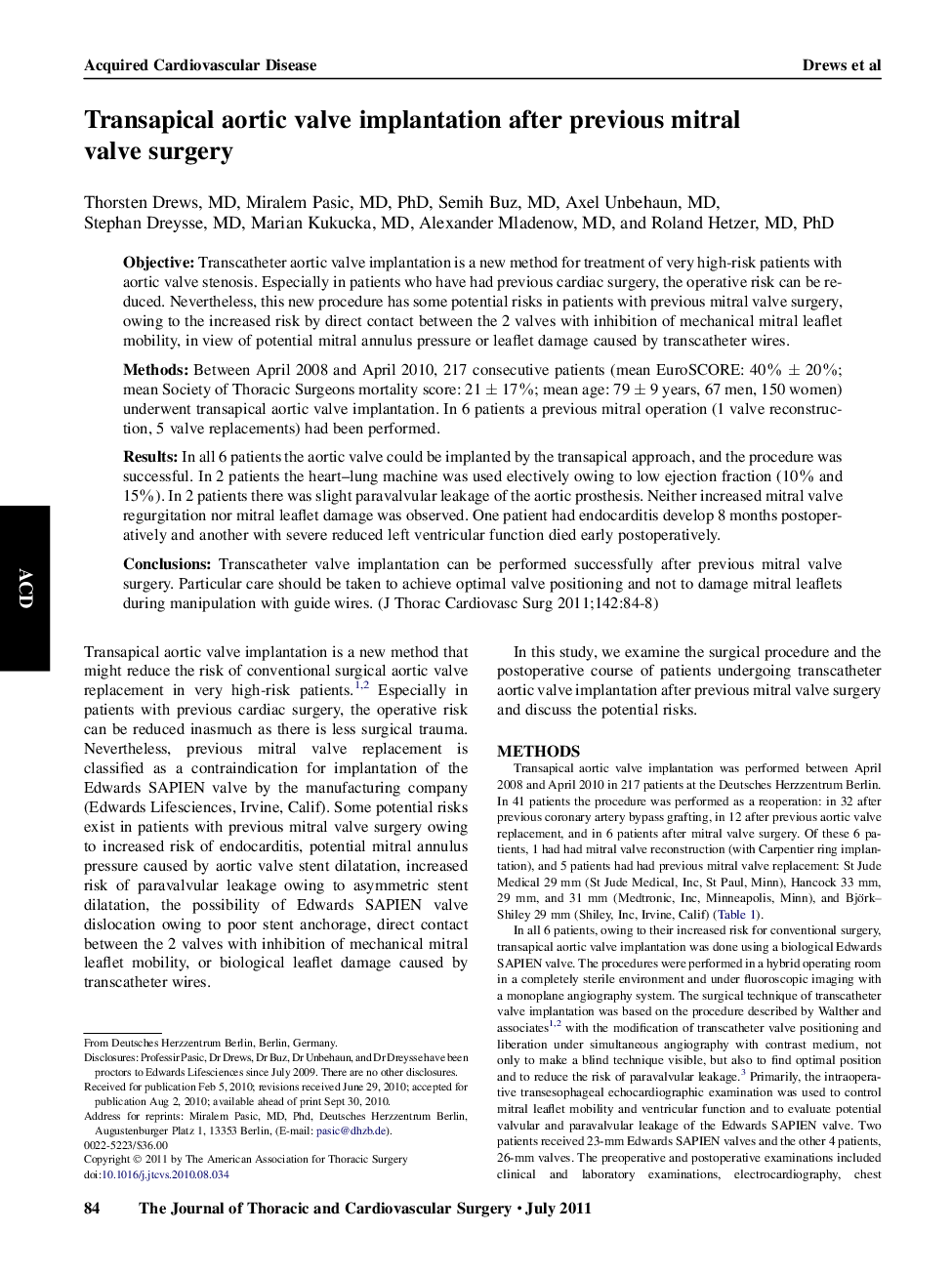| Article ID | Journal | Published Year | Pages | File Type |
|---|---|---|---|---|
| 2982502 | The Journal of Thoracic and Cardiovascular Surgery | 2011 | 5 Pages |
ObjectiveTranscatheter aortic valve implantation is a new method for treatment of very high-risk patients with aortic valve stenosis. Especially in patients who have had previous cardiac surgery, the operative risk can be reduced. Nevertheless, this new procedure has some potential risks in patients with previous mitral valve surgery, owing to the increased risk by direct contact between the 2 valves with inhibition of mechanical mitral leaflet mobility, in view of potential mitral annulus pressure or leaflet damage caused by transcatheter wires.MethodsBetween April 2008 and April 2010, 217 consecutive patients (mean EuroSCORE: 40% ± 20%; mean Society of Thoracic Surgeons mortality score: 21 ± 17%; mean age: 79 ± 9 years, 67 men, 150 women) underwent transapical aortic valve implantation. In 6 patients a previous mitral operation (1 valve reconstruction, 5 valve replacements) had been performed.ResultsIn all 6 patients the aortic valve could be implanted by the transapical approach, and the procedure was successful. In 2 patients the heart–lung machine was used electively owing to low ejection fraction (10% and 15%). In 2 patients there was slight paravalvular leakage of the aortic prosthesis. Neither increased mitral valve regurgitation nor mitral leaflet damage was observed. One patient had endocarditis develop 8 months postoperatively and another with severe reduced left ventricular function died early postoperatively.ConclusionsTranscatheter valve implantation can be performed successfully after previous mitral valve surgery. Particular care should be taken to achieve optimal valve positioning and not to damage mitral leaflets during manipulation with guide wires.
